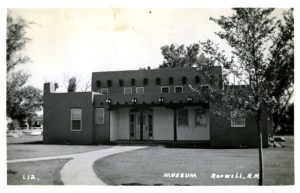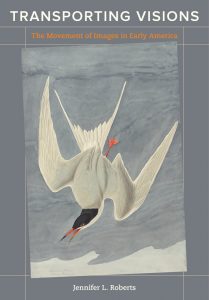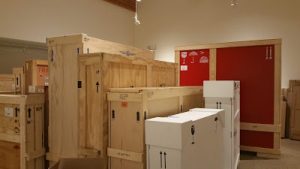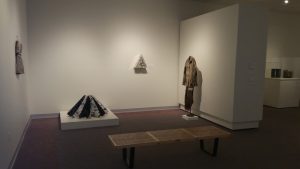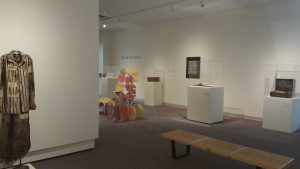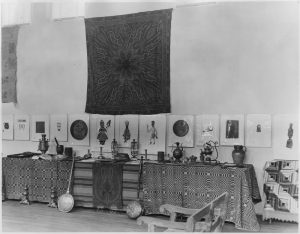It occurred to me earlier today that I haven’t explained why I’m in graduate school at William and Mary. After all, I had a pretty comfortable job working as a curator at the Roswell Museum. Why would I drop all of that to return to the life of a student? Today I’d like to answer that question.
I’m here because I’m interested in the dynamic between travel infrastructures and art, and the ways in which railroads, highways, and other forms of transportation shape what kind of art gets shown (or not), and by whom (or not). More specifically, I’m interested in the travel infrastructure underpinning the Community Art Center program, a WPA initiative supervised by the Federal Art Project during the 1930s and early 1940s.
I became interested in this project during my time at the Roswell Museum, which was originally a federal community art center. Marvelously enough, the museum still has its WPA archive, and I started perusing it a couple of years ago while working on another project. Reading about the museum’s history was interesting, but what really intrigued was the network supporting it, the vast infrastructure that was hinted at through letters, receipts, and other documents.
I started thinking about art and travel back in 2014 when I read Transporting Visions by Jennifer Roberts. Focusing on the 18th and 19th centuries, Roberts discusses how the physical movement of art across space can influence its structure and content. Whether it’s a painting packed in a crate across the Atlantic Ocean, or a sketch drawn hundreds of miles from home in unfamiliar country, this book explores the ways in which the physical qualities of art as a transported object can shape it. While I wasn’t working on anything at the time that correlated to the questions this book asked, I liked its focus on the physical qualities of art (and what a pain it can be to move).
What really got me reinvigorated in the dialogue between art and travel was my own experiences as a curator. I hadn’t been at the museum very long when I’d read Roberts’ book, but over the next several years I would get a lot of practical experience that would shape my scholarly interests. As part of my work with exhibition planning, I was involved in the transportation of artwork to and from the museum, and I did a lot of it myself. I’ve driven U-Haul trucks full of art, and I once transported nearly all of the works for one exhibition, The Art of the Book, in the back of my car. Even when I wasn’t the one driving, my Registrar and I dealt with shipping companies, oversaw the packaging of art, and became familiar with all the paperwork that accompanies any art work when it travels.
Since these logistics were always on my mind in one for or another, I couldn’t help but think about them when I began to go through the museum’s archive. I soon realized, however, that as much as I would have loved to explore these logistics further, I’d never be able to do as I long as I was working in Roswell. Receipts and checklists don’t really lend themselves to an art exhibition the way paintings do, and more importantly, there was simply too much to do in my daily work to focus on it. There would always be exhibitions to plan, installations to oversee, and other tasks. The only way to give this project the attention it deserved was to go back to school. I had actually been debating going back for a PhD for several years, but I didn’t have a particular project or focus in mind. The Roswell Museum’s archive not only offered a lauching point, but also provided a way for my to combine my academic and museum experiences into one endeavor. My years of working in museums, and of dealing with these daily logististics, have given me a perspective that will help me immensely as I work on this project.
So that’s how I ended up here. In future posts I’ll tell you about which classes I’m actually taking, and how they’ll help me in my research.
